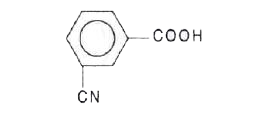Give the name of the KClO ?
To name the compound KClO, we can follow these steps:
Step 1: Identify the ions present in the compound
- KClO consists of two parts: K⁺ (potassium ion) and ClO⁻ (hypochlorite ion).
Step 2: Name the positive ion
- The positive ion in KClO is K⁺, which is called potassium.
Step 3: Name the negative ion
- The negative ion in KClO is ClO⁻, which is called hypochlorite.
Step 4: Combine the names of the ions
- To name the compound, we combine the name of the positive ion (potassium) with the name of the negative ion (hypochlorite).
Final Answer:
- The name of KClO is potassium hypochlorite.
---
- KClO consists of two parts: K⁺ (potassium ion) and ClO⁻ (hypochlorite ion).
- The positive ion in KClO is K⁺, which is called potassium.
- The negative ion in KClO is ClO⁻, which is called hypochlorite.
- To name the compound, we combine the name of the positive ion (potassium) with the name of the negative ion (hypochlorite).
- The name of KClO is potassium hypochlorite.
Topper's Solved these Questions
- THE LANGUAGE OF CHEMISTRYBOOK - ICSECHAPTER - THE LANGUAGE OF CHEMISTRYEXERCISE - EXCERCISE 1 (B)
27 Videos
- THE LANGUAGE OF CHEMISTRYBOOK - ICSECHAPTER - THE LANGUAGE OF CHEMISTRYEXERCISE - EXCERCISE 1(C ) (Fill in the blanks)
7 Videos
- THE LANGUAGE OF CHEMISTRYBOOK - ICSECHAPTER - THE LANGUAGE OF CHEMISTRYEXERCISE - EXCERCISE 1(C ) (Correct the following statement)
21 Videos
- STUDY OF THE FIRST ELEMENT - HYDROGENBOOK - ICSECHAPTER - STUDY OF THE FIRST ELEMENT - HYDROGENEXERCISE - TOPIC 2 Properties of Hydrogen, Oxidation nd Reduction (5 MARKS QUESTIONS)
29 Videos
- THE PERIODIC TABLE BOOK - ICSECHAPTER - THE PERIODIC TABLE EXERCISE - TOPIC 2 Studying Individual Groups (5 Marks Questions)
34 Videos
Similar Questions
Give the name of the first antibiotic.
View SolutionGive the IUPA name of the following compound :

View SolutionGive the name of the metalloid in group 16.
View SolutionGive the IUPAC names of the following:

View SolutionGive the IUPAC names of the following:

View SolutionGive the IUPAC names of the following:

View SolutionGive the IUPAC names of the following:

View SolutionGive the IUPAC names of the following:

View SolutionGive the IUPAC names of the following:

View SolutionGive the IUPAC names of the following:

View Solution
